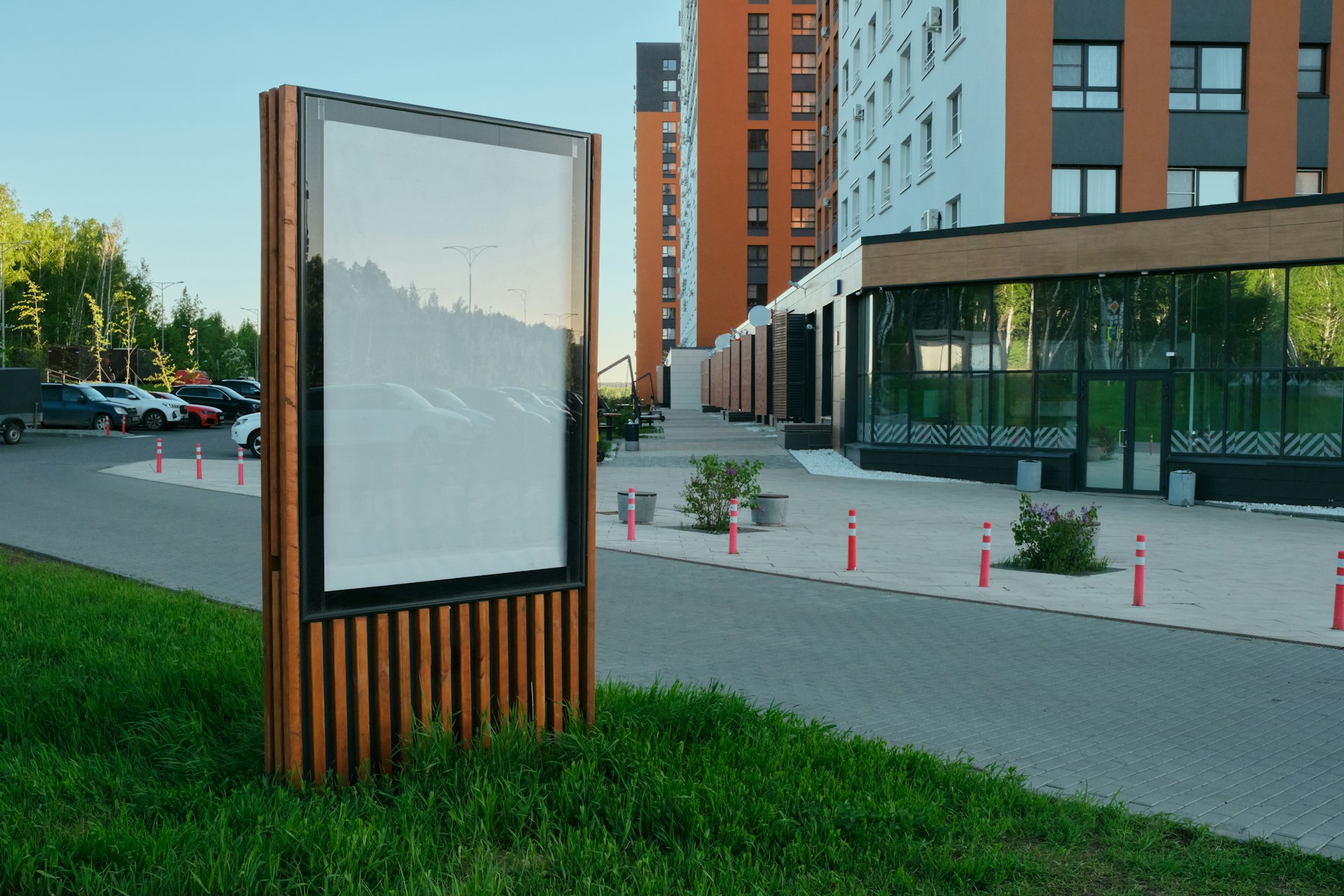Truck wraps do more than cover a vehicle. They’re one of the best ways to promote your business while out on the road. Whether parked at a job site or cruising down the interstate, a well-done wrap works around the clock, delivering your message to drivers, pedestrians, and potential customers alike. But not all wraps are created equal. Over time, wear and tear or poor workmanship can make even the most eye-catching design look messy or faded.
That’s why regular inspections are so important. They allow you to catch small issues before they turn into bigger, more costly problems. A poor-quality wrap doesn’t just affect your brand’s appearance, it might also damage the vehicle if neglected. Knowing what to look for makes all the difference. Below, we’ll walk through the main things you should check when evaluating the condition of a truck wrap.
Check For Proper Adhesion
The first thing to look at is how well the wrap is sticking. A quality vinyl wrap should stay smooth and flush against the surface of the truck. If it’s lifting at the edges or bubbling in the middle, there could be a problem underneath. Poor adhesion doesn’t just look bad. It can cut the life of the wrap short and end up requiring costly repairs.
Here’s what to look for:
1. Air bubbles that weren’t pressed out during installation
2. Peeling along corners and seams
3. Wrinkles or loose spots on curved body panels
4. Sections that are curling away, especially around rivets or emblems
These issues usually show that the surface wasn’t cleaned properly before installation, or that low-grade adhesive was used. Once open edges develop, moisture, dirt, and sun exposure can work their way in and make matters worse.
Even the best wraps can eventually show a bit of edge lift, especially in high-exposure areas like hoods or bumpers. That’s why it helps to check regularly. Catching small lifts early lets a professional fix them before they spread.
Examine Color Consistency And Print Quality
Your truck is a moving billboard. If the colors are off or the print is low quality, people will notice. Clean, vibrant, and sharp graphics tell people you care about your business image. Fuzzy text or faded images can do just the opposite.
As you walk around your vehicle, look at how the colors and designs appear across different parts of the truck. Anything that looks inconsistent or dull might point to issues during printing or application.
Ask yourself:
1. Do the logos and text stay sharp and easy to read?
2. Are the colors just as bright and bold as they were on day one?
3. Are there any streaks, color shifts, or odd lines?
4. Does the wrap match your company’s branding?
Sometimes wraps are printed in pieces, and the inks are a little off from one batch to the next. That leads to patches of inconsistency that don’t reflect well on the overall design. On bigger vehicles, like box trucks or trailers, the difference is even more noticeable.
Well-done truck wraps will have uniform color and clarity from one end to the other, no matter the lighting or viewing angle. That kind of detail helps your branding stay strong wherever your trucks go.
Inspect Seams And Overlaps
Seams and overlaps are part of nearly every truck wrap. They play a big role in both how the vehicle looks and how the wrap holds up over time. When done right, they’re barely noticeable. But when seams are sloppy or misaligned, they can ruin the look of the design and open the door to damage.
Take some time to closely inspect these areas:
1. Are graphics or text lining up across seams and doors?
2. Do overlapping areas lie flat and smooth without puffing up?
3. Are the lines and patterns continuous without breaks?
4. Can you see obvious ridges, bumps, or lifted spots?
5. Are dirt or debris collecting around these points?
Misaligned seams give off an unpolished vibe and can make even a well-designed wrap look rushed. Smooth overlaps protect the truck body underneath by keeping moisture and road grime from gathering under the edges. When seams are tucked and sealed properly, they’ll perform better and look great even up close.
Review For Any Damage Or Wear
Truck wraps live a tough life. From long highway trips to dirty job sites, they’re exposed to all sorts of weather and road grime. That’s why it’s smart to check for physical damage and natural wear now and then.
Start with a full walkaround in good daylight. Pay special attention to places where the truck takes the most hits, like lower panels, wheel wells, and leading edges.
Watch for:
1. Scratches or cuts in the vinyl from rocks or tree branches
2. Burn or melted spots from pressure washers held too close
3. Faded areas from long sun exposure
4. Dirt or stains that won’t clean off
5. Dents or metal damage beneath the wrap
Even with high-quality vinyl, time and rough conditions can wear out wraps. Hill climbs, bad roads, and heavy washing tools all take a toll. And when the damage is left too long, it often spreads.
Keeping things clean with mild soap and low-pressure water, along with avoiding scrubbing tools with stiff bristles, can go a long way toward preventing issues. A little prevention at the wash bay beats a full wrap replacement any day.
Ensure Professional Truck Wrap Installation
Many wrap problems trace back to how the material was installed. Even top-tier vinyl will fall short if it’s handled by someone without the right experience. A good truck wrap installation is done in a clean space, using precise tools, care, and zero shortcuts.
Professional installers will fully clean and prep the truck. They’ll stretch and heat the wrap to fit curves, rivets, and odd shapes. These steps matter, and skipping them often leads to bubbling, wrinkling, or early peeling.
When evaluating a truck, ask yourself:
1. Are the graphics laid out exactly as planned?
2. Do the edges hug the contours with zero lift?
3. Was the surface prepped and clean before install?
4. Will the wrap hold tight even in high-wear areas?
Clean work equals longer-lasting wraps and fewer repairs later. Trucks wrapped properly also make your business look more credible when they roll through town.
Truck wrap installation affects both longevity and visual consistency. It’s not just about how it looks when it’s done but how it holds up for the long haul. Skilled technicians know how to manage heat, stretch, placement, and detail work so that everything holds firm, lines up, and stays bold.
Keep Your Truck Wrap Looking its Best
A good-looking wrap doesn’t just happen by chance. Regular inspections help you stay ahead of peeling, fading, or other issues that can affect your trucks and your brand image.
By checking the key areas like adhesion, color quality, seam alignment, and overall damage, you’re making sure your fleet continues to look sharp out on the road. It also saves you money in the long run by catching problems early.
Your trucks are often one of the first impressions people get of your brand. A fresh, clean design shows pride in quality and helps build trust with customers. On the flip side, a wrap that’s peeling or faded sends the wrong signal.
So whether your fleet has been wrapped recently or has seen some miles, a quick walkaround every few weeks can make all the difference. Strong graphics, securely placed seams, bright colors, and a solid truck wrap installation are all worth paying attention to.
Keep them in top shape and your brand will travel well no matter where the road takes you.
To keep your fleet looking sharp on every route, count on Hyperformance Graphics for professional truck wrap installation. Our experienced team uses the right tools and techniques to ensure your wraps stay smooth, vibrant, and durable no matter how many miles you put on the road.



